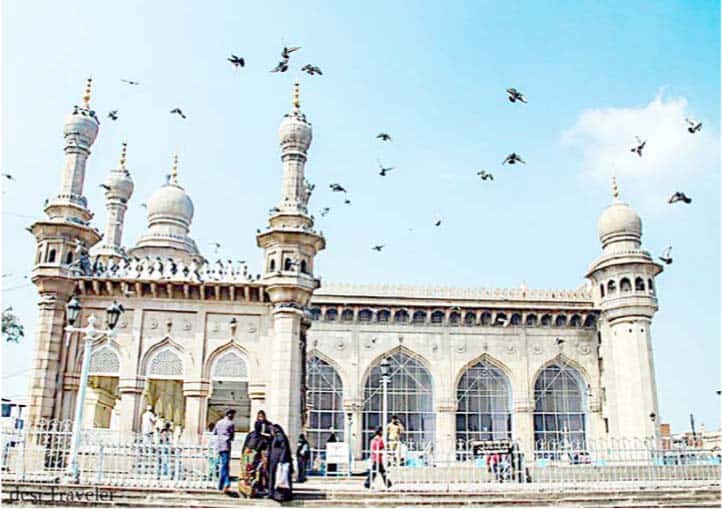Hyderabad: Foundation for the construction of Makkah Masjid was laid 400 years back. For its constructions, three varieties of stones were used. Labourers from Ranga Reddy, Mahboob Nagar and Nalgonda were commissioned for this work. Stones from Sadnagar Hills were brought for its construction.
Sultan Mohammed Quli Qutub Shah had laid the foundation stone for Charminar in 1591 to inhabit Hyderabad City. The construction of Jamia Masjid near Charminar was started in 1597. It was the first masjid in Hyderabad. Since it was proving insufficient for the worshippers, Sultan Quli Qutub Shah issued a royal farman in 1610 for the construction of a larger masjid but before implementing this plan, he died in 1612. After his death, his son-in-law, Sultan Mohammed Quli Qutub Shah laid the foundation stone of Makkah Masjid 400 years back in 1617. The important point about the construction of this masjid is that no mud was used in its construction. Sultan Mohammed Quli Qutub Shah could not complete the construction of Makkah Masjid during his lifetime. After his death, his son, Abdullah Qutub Shah ascended the throne in 1626. During his regime, Moghal Emperors attacked Hyderabad but the construction work of Makkah Masjid continued. Abdullah Qutub Shah died in 1672.
After his death, Sultan Abul Hasan Tanashah continued its construction. During his regime, Moghal rulers seized the Qutub Shahi Kingdom. In 1694, Aurangzeb completed its construction. In this manner, the construction of Makkah Masjid was completed in 77 years.
For transporting stone, elephants were used and 8000 labourers were engaged. It may be noted that the construction of Taj Mahal was completed in 30 years but it took 77 years for the construction of Makkah Masjid.
The height of Makkah Masjid is 170 yards. The length of the prayer hall is 67 meters and its width is 54 meters. At a time, 3000 worshippers can offer prayers in Makkah Masjid whereas, in its courtyard, 10000 worshippers can be accommodated.

